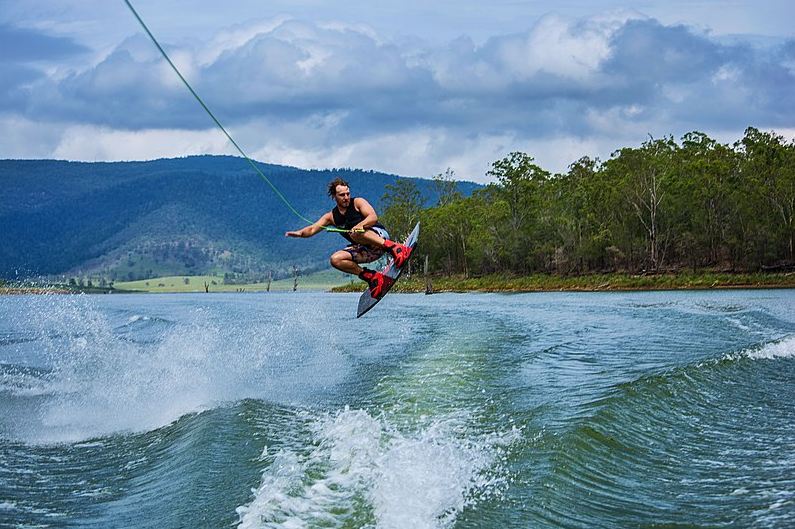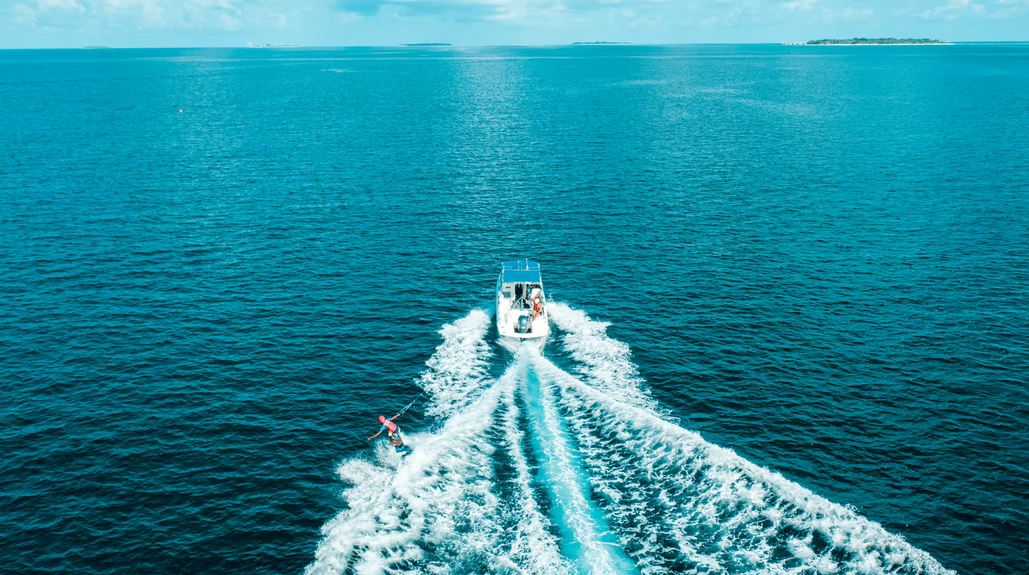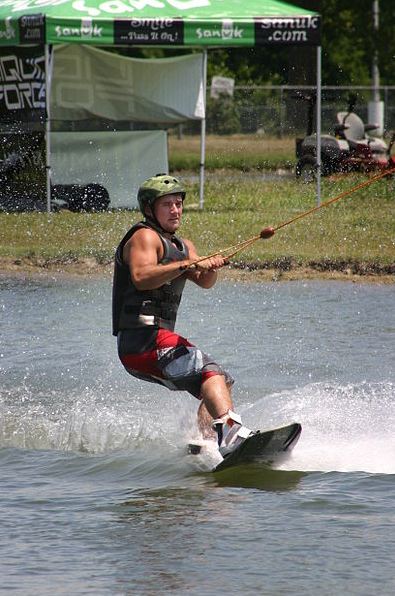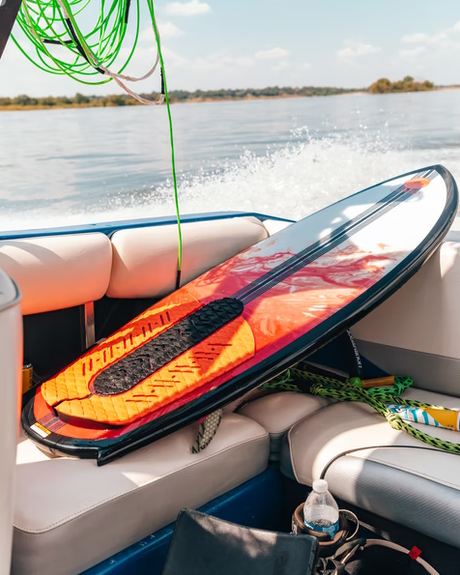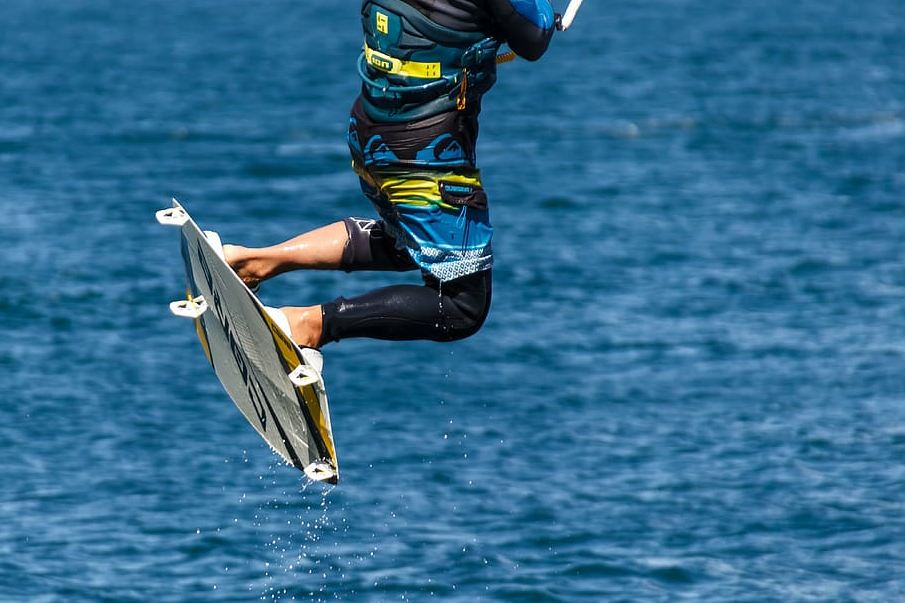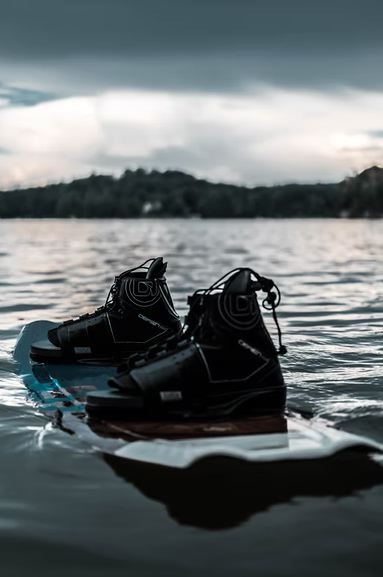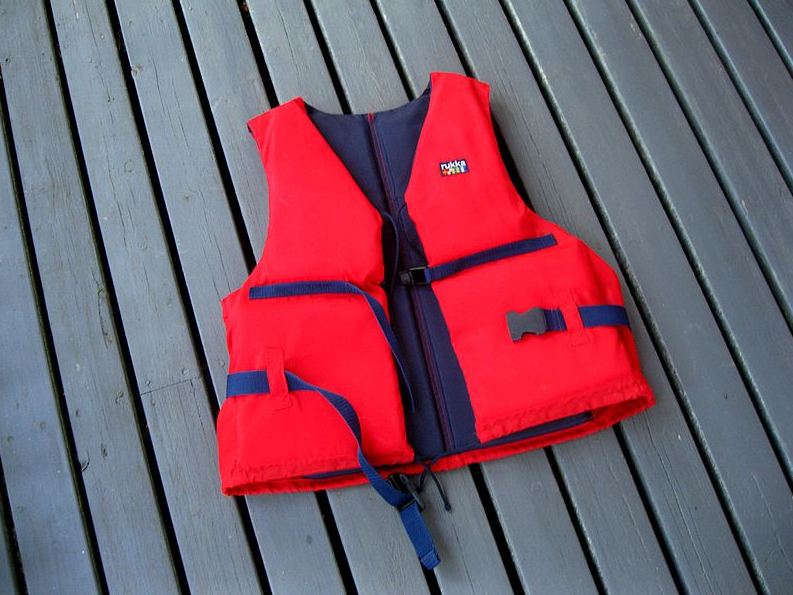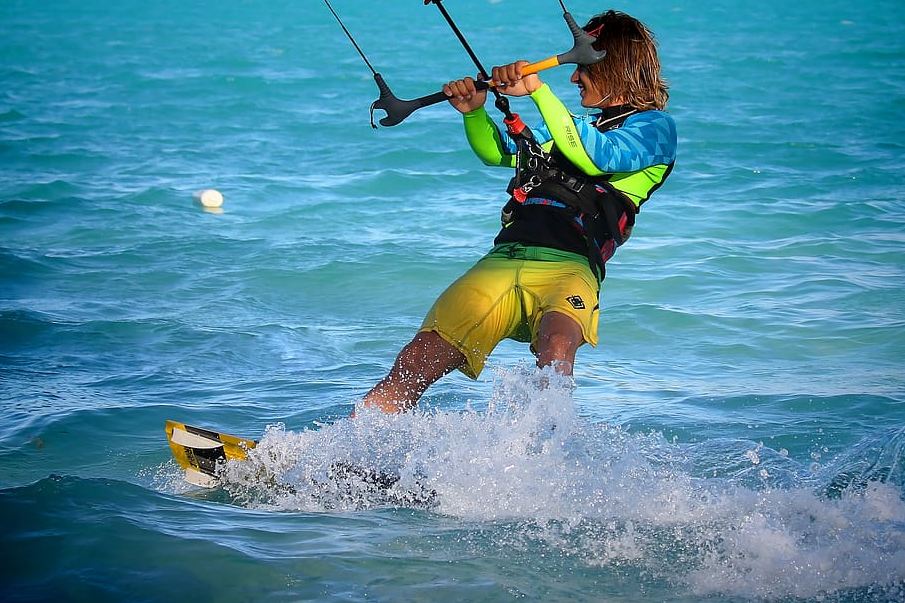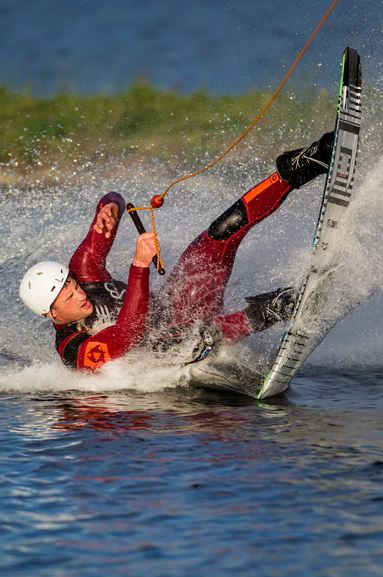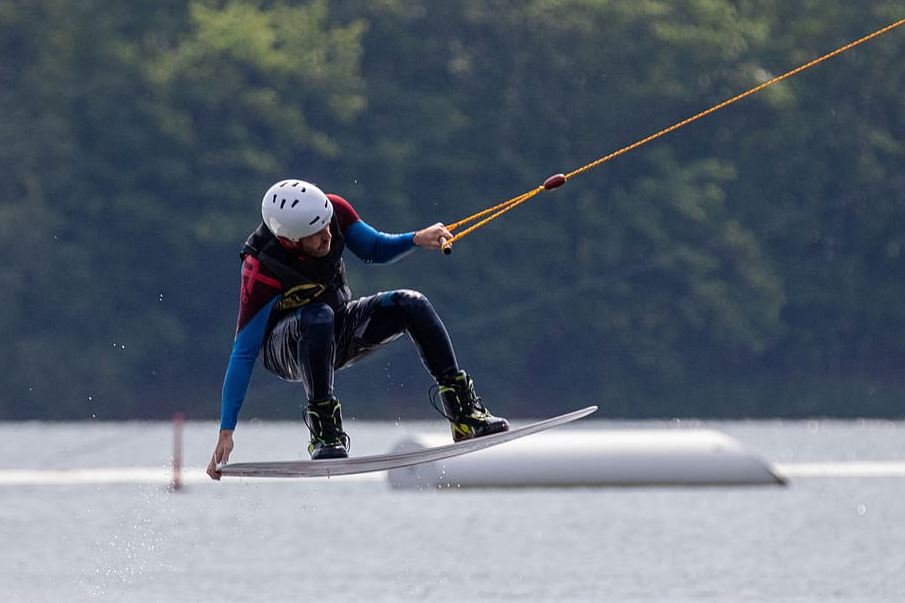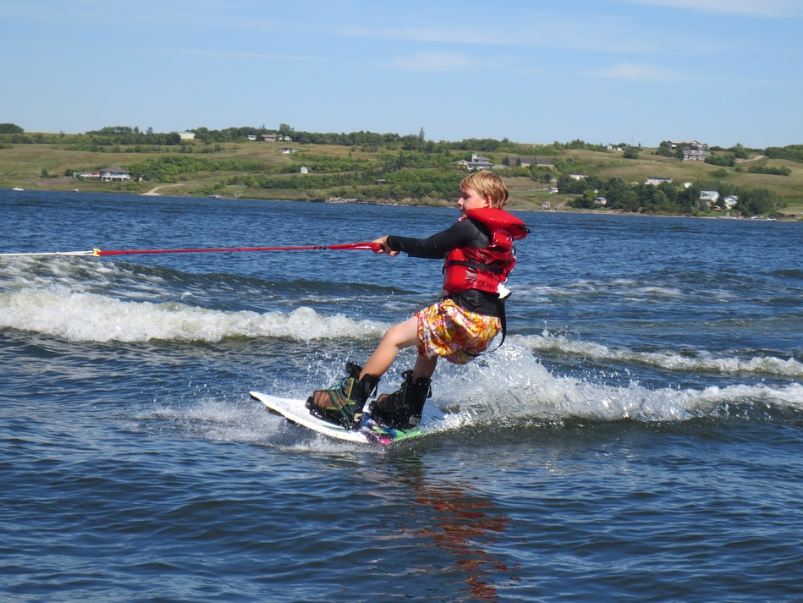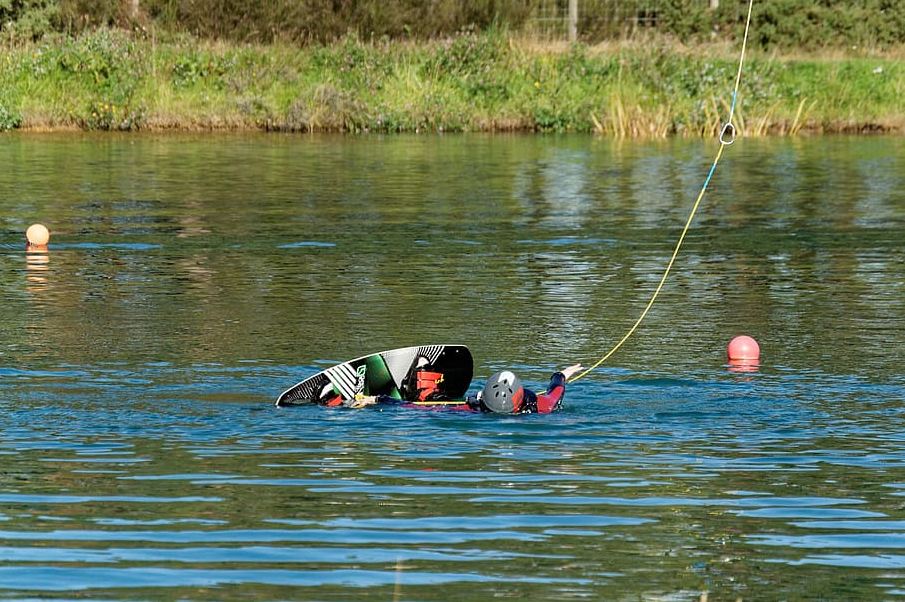Wakeboarding is a high-octane, adrenaline-inducing water sport that is a mix of surfing , water skiing, and snowboarding. This sport originated from a boat that tows a person on two planks across the water. It’s a fast and furious sport, and once you get the hang of it, you can perform different tricks and stunts while keeping proper balance and control on the wakeboard being towed in the water.
When wakeboarding took off in the 1980s, it gradually displaced waterskiing as a water sport. It’s because wakeboards are much easier to get up on as compared to narrow skis, and it offers an excellent platform for aerial acrobatics. Plus, it requires less speed from the boat so that riders can go slower and are able to ride longer before their arms get too tired.
If you’re considering trying wakeboarding but are intimidated by the learning curve, you must not. In this guide comes the basics about wakeboarding as well as tips for first-timers. Wakeboarding is a relatively quick sport to learn, and if you already have experience with other water board sports, then picking it up should be a picnic.
Ways to Wakeboard
Wakeboarding can be done in various bodies of water, such as lakes, rivers, and lake parks. Those who are extra adventurous and highly skilled enjoy it on the sea. But the main way to wakeboard is by boat or by cable.
1. By getting pulled by a boat or jet ski
One of the best ways to wakeboard is to be pulled by a boat. It can be practiced on lakes, reservoirs, and even in the sea. While you are being towed by a boat or jet ski, you use its wake to surf on. It’s highly recommended to stick to calm waters first while you find your feet.
This way, you can have more control as the boat goes as fast or as slow as you prefer. You can also ask to practice a move as many times as you need. However, renting a boat can be expensive and sometimes tricky to arrange.
2. By getting pulled by a cable
Overhead cables work like a boat or ski lifts. The main types of cables used in wakeboarding include full-length and tower cables. Several boarders use full-length cables at a time, and tow lines move at a continuous speed. If you fall off your board, you need to go back to the starting point and begin again. Meanwhile, tower cables come with a single cable running between two or more towers. At a time, only one wakeboarder will be using the cable, and an instructor will operate the tow line. If you fall down the board, the line stops and waits for you.
Also, this is more affordable than a boat and a jet ski and more eco-friendly because it won’t need boat or jet ski fuel. It’s also ideal when you want to progress to a boat tow. However, it gives you less control.
Wakeboarding Equipment
The equipment needed for wakeboarding is essential in contributing to the player’s performance. Since wakeboarding is an extreme sport that involves energy and the rider’s sense of adventure, the comfort level with equipment also matters a lot.
Here are your essentials and even wakeboarding accessories to help you enjoy the sport:
1. Wakeboard
The most basic equipment for this sport is a wakeboard. There are many boards out there, and they can be made of foam, wood, or honeycomb design mixed with resin and are coated with fiberglass. Metal screws are inserted into it to attach bindings and fins.
The size of the wakeboard must be proportional to the weight of the rider. The width affects the way it sits on the water.
The areas where the width of the board matters are the tip, middle, and tail. Boards with narrower tips and tails can turn more aggressively, whereas those with wider tips and tails allow the player to perform different tricks.
The length also plays an important role in deciding the riding style. A smaller board can spin faster and feel lighter, but it isn’t easy to land, whereas a larger board can move smoothly and slowly.
2. Fins
Fins are fixed below the board, and you don’t usually have to buy them separately. It acts as a pair of grips that stops the flow of water while traveling. Fins control the forward movement of the board.
Depending on the types of tricks a player performs, the fins are changed. The closer the fins are to the center, the quicker and better the board sits and moves on the water.
3. Bindings
No board is complete without a nice pair of bindings. Also called boots, these are connected to the board, and it’s where the players put their foot in.
The two types of binding are open-toe and closed-toe bindings. Open toe bindings look like shoes with broad size and better toe movement, while closed toe bindings give more responsiveness to the board while moving the toes. You can get bindings for your exact foot size or something that can fit a range of foot sizes.
4. Life vest or impact vest
Life vest serves as a protective guard to help the wakeboarder stay on top of the water. In case they fall down the board, these vests can help them stay up in the water and prevent drowning. The life vest must be US Coast Guard-approved.
Alternatively, an impact vest can be worn by a player to absorb impact from falls. It makes a huge difference when you suffer from pain as you trample on the board as the water hits you. Impact vests are compulsory at most cable parks, and they can also provide floatation like a life vest. Professionals and serious water sports riders usually wear impact vests.
5. Wet suit
Wet suits are used by players to keep their bodies warm and to protect the body from sunlight. These suits are tightly fit and don’t let the water come inside the body. Some wakeboarders don’t use wet suits as they can restrict the movement of the arms and legs. It’s mandatory in some tournaments, but for leisure purposes, it’s not necessary. You can always wear a swimsuit or something comfortable, but it’s best if it fits snugly in your body.
6. Wakeboard line
This one is the line connecting the player and the boat. The other end is attached to the boat, while the other has a handlebar for the player to hold onto. The length of the rope usually varies from 55 to 75 feet, and players choose their length depending on their level of experience. For beginners, a shorter tow rope between 30 to 50 feet is ideal for making the ride easier.
7. Helmet
While a helmet isn’t popular with boat riders, it’s a necessary protective measure in case of losing balance and falling down the water at great speed. Wearing a helmet can prevent you from getting stitches, scars, and significant injuries from a bad crash.
8. Orange flag
It would be best if you also had an orange flag, which is a universal signal that there’s someone in the water near the boat. These flags are available at most marinas. Whenever a rider is in the water, someone in the boat must raise the flag before you start wakeboarding or when they are prepping to get back on the boat.
9. Board bags
This is non-essential, but it’s a handy way to keep your wakeboarding equipment together. Having one big bag to take out of the car and store all your gear in at home can be very convenient.
10. Poncho
A poncho is also non-essential, but it can be highly valuable if you’re riding on a friend’s boat and you’re waiting for the rest of your friends to have a go at the board. The wind chill can be reduced by a snuggly poncho.
Wakeboarding Tips for Beginners
Wakeboarding is a water sport that can test your strength, endurance, speed, and skills. Though it might be intimidating for a beginner, here are some tips so you can get prepared and ready for wakeboarding:
1. Choose a beginner’s wakeboard.
A beginner’s wakeboard is easier to control. Beginner-friendly boards come with a continuous rocker or a curve from the tip to the tail if you look at it at the side. This type of wakeboard can help make your ride smoother and easier.
2. Get into the right position.
Here’s how you can position yourself as you wakeboard:
- Enter the water with the board lying perpendicular to your body. Let your heels rest on the board’s heel side edge.
- Hold the handle of the wakeboard connected to the boat.
- Once you are balancing and ready, you can start. Tell your instructor or the boat driver to start. Slowly, the boat is pushed against your feet.
- Once upon the water surface, push the board forward using your forward leg. This leg will function as your accelerator to help you move closer to the board. Pushing it with your back leg slows the board and can create more distance between the boat and the board. After a while, you may not need to use the rope tension, but you’re simply being towed by the wakes produced by the boat.
- Start riding the boat sideways with knees bent towards your chest and the arms holding the handlebar of the rope. Your toes must be pointed towards the boat to reduce the drag against the water and make it pop up easily on the surface.
- Stay hunched as you rise up. As you gain confidence that you’re indeed out of the water and gliding, you can slowly stand up.
- Once you’re up, stay behind the boat until you get a feel for how to move to your right or left. Keep your weight on the back foot, which will serve as your steering wheel or rudder. If you put much of your weight on the front foot, you’ll zoom off, or worse, face plant.
3. Take control of the board.
The easiest way to control the board is to put your back binding towards the rear of the board as far as you can. It must be parallel to the back edge, so you can directly press on the rear fin. Your feet must be shoulder-width apart, and your front binding must point slightly to the front of the board.
4. Sit back.
Once you’re in the water and you’re ready to be towed, sit back as if sitting in an imaginary chair. Tuck in your arms and make sure your knees are between your elbows. When you feel the pull of the rope, keep the edge of the board above the water and stay in your crouched down position until you’re entirely out of the water. If you stand too quickly, you might lose your balance, so straighten your legs gradually.
5. Manage where you put your weight.
When getting yourself up out of the water, most of your weight is on your front foot. But when you’re standing, guide your front foot forward and place most of your weight on your back foot.
6. Expect to get wet.
While you’re learning, you’ll probably end up in the water dozens of times. It can hurt if you hit it at speed. But it’s all part of the learning process, so don’t be upset.
7. Don’t pull on the rope.
When holding tightly to the rope, don’t pull on it. Let it naturally pulls you without resistance – otherwise, you’ll dip in the water.
8. Look straight.
Keep the handle close and low to your hips. Don’t look at the board, as you’ll likely lose balance.
9. Relax.
There’s a bit of a learning curve when learning how to wakeboard. One reason many don’t try wakeboarding, or other water sports for that matter, is because they don’t want to look foolish in front of others. In reality, you’ll fall down a lot, and the captain and the crew are likely to be very patient with you, giving your lots of encouragement and advice. Everyone went through the same thing, and hoping to rise above the water the first time isn’t likely to happen. Relax and enjoy the experience – after all, wakeboarding is much about fun as anything else.

